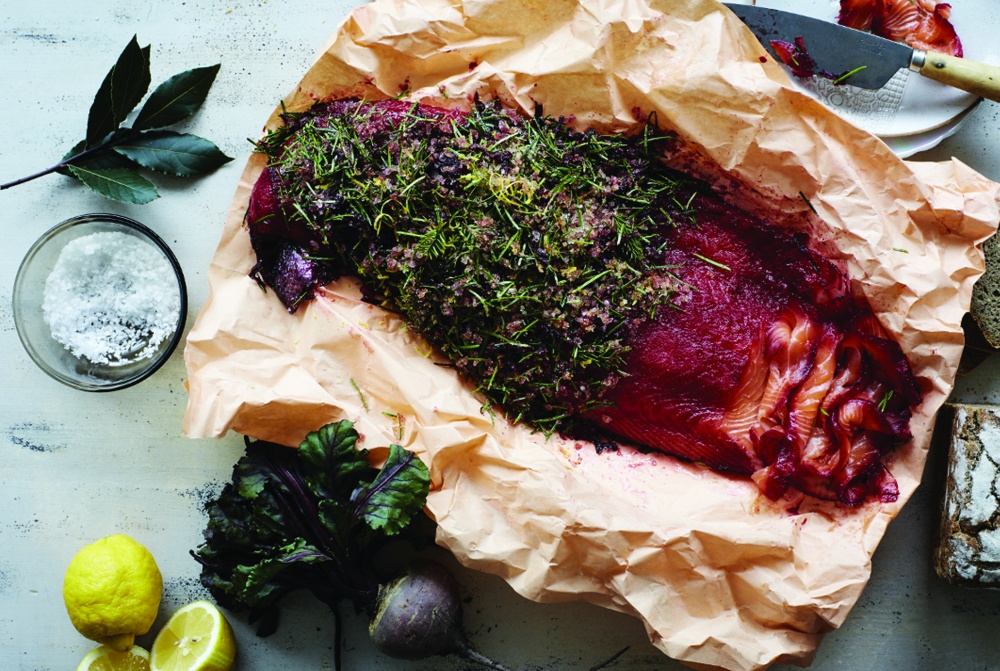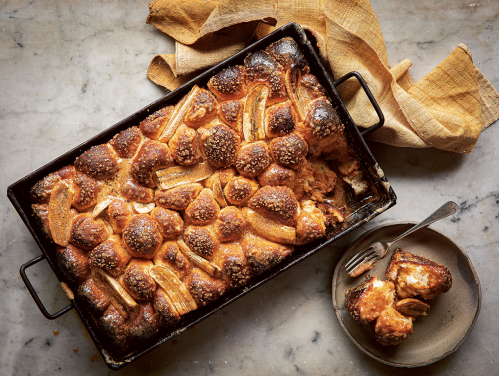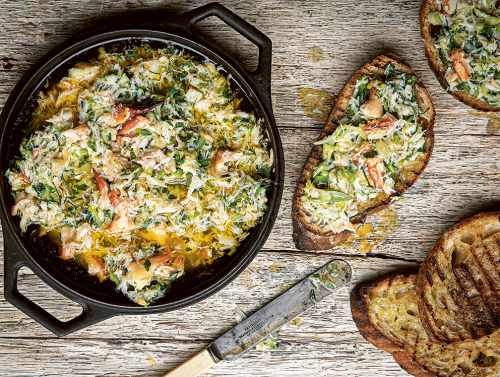Christmas-Cured Fish

- 2kg filleted fish of your choice
- 350g fir or spruce needles or 700g pine needles (or a combination)
- 770g demerara sugar
- 500g table salt
- 2 small beetroots, grated
- grated zest of 3 lemons
Trout is a great option for curing or use other sustainable fish, such as monkfish, halibut, or something recommended by your local fishmonger. Use the freshest fish you can find, making sure it hasn’t been frozen before buying.
Before you cure, it is good practice to freeze the fish as this kills any bacteria that might be present. You can ‘flash freeze’ for 24 hours, but I like to freeze the fish for about a week. Defrost it in the refrigerator a few hours before you start curing.
Prepare the needles. Spruce, fir and pine needles can be very sharp, so care must be taken not to hurt your fingers while preparing them for cooking. You will need a pair of large, sharp scissors and a big bowl. Snip some larger branches from your tree. Wash the branches under cold, running water, making sure that you get rid of all possible bits of mud and dirt. You may notice that there are balls of sap, but this is safe to eat, as are the dried buds which might be at the end of some of the branches. Turn the branch upside down over a bowl so that the needles make a chevron shape. Using scissors, cut upwards so that the needles fall directly into the bowl. I usually then wash the snipped needles once more before using them.
To make the cure, mix the sugar, salt, grated beetroot, lemon zest and needles together. Lay out some cling film on a flat surface and sprinkle a generous layer of the curing mixture over it, making sure it is roughly the length and width of the fillet.
You might need an extra pair of hands for this next step: lay the fish over the first layer of cure, then pack the top and sides of the fillet with the rest of the cure and wrap tightly in cling film, making sure it is totally covered in the cure mixture.
Place the fish on a baking tray underneath something heavy, and refrigerate for 24–36 hours. Halfway through the curing process, turn the fish over, remembering to place it under something heavy again. When it is ready to eat, wash off the cure and make sure there are no needles left on the fish. Slice thinly. This keeps in the refrigerator for up to five days.







